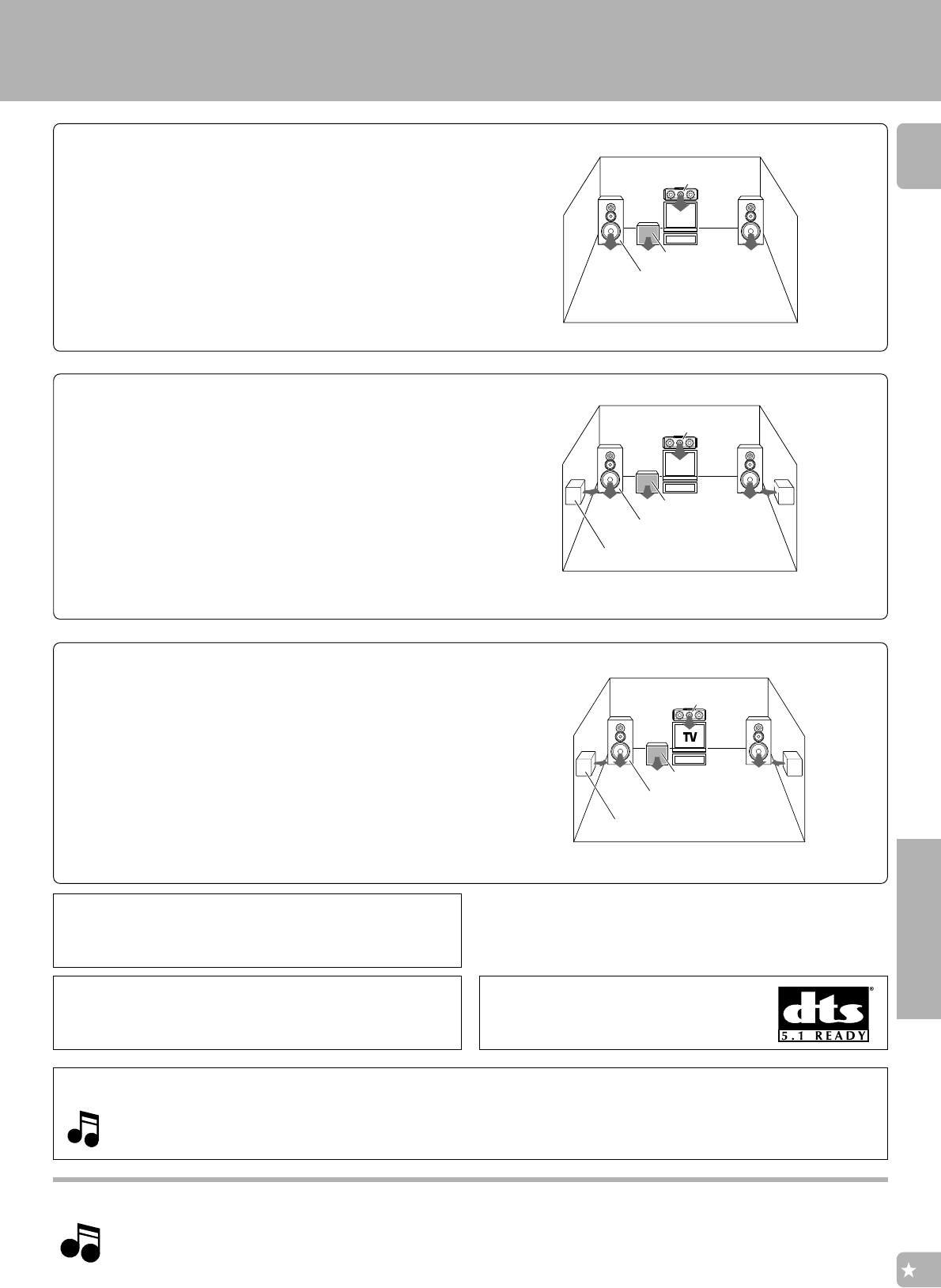
43
KRF-V7771D (En/T)
Operations
TV
What is DSP?
DSP stands for Digital Signal Processor. The way a sound is heard in an actual environment depends on a variety of different factors. One
of the most important facters is reverberation (the act of decaying elements of sound echoing in various places). The DSP modes produce
the feeling of presence by using the DSP to create reverberation, without spoiling the sound quality of the original signal.
NoteNote
Note
Recommended speaker installation
It is recommended that the surround speakers are installed straight to the left and right of the listening position or slightly behind, at a height
of about 1 meter higher than the listener’s ears.
See your retailer, or installation varies by room shape, size and personal preference.
DSP mode
The DSP mode lets you add the atmosphere of an arena, jazz club or theater
from a PCM or analog input source. * These modes are particularly effective
when used with stereo program sources, like CD, television, and FM radio.
The WALL parameter lets you adjust the “brightness” of the sonic environ-
ment according to your preference.
The EFFECT level lets you adjust the “presence” of the sonic environment
according to your preference.
* The DSP mode will produce a stereo-like surround effect from monaural
sources, but there will be some reduction in the presence of the arena, jazz
club, or theater (etc.).
Front Speaker (L, R)
Subwoofer (SW)*
Surround speaker (LS, RS)
* Optional in this mode.
Center speaker (C)
Ambience effects
“DTS” and “DTS Digital Surround” are trade-
marks of Digital Theater Systems, Inc.
Re-equalization and the “Re-EQ” logo are trademarks of Lucusfilm
Ltd. Manufactured under license of Lucasfilm Ltd. U.S. Patent Nos.
5,043,970; 5,189,703 and 5,222,059.
TV
* Optional in this mode.
Dolby 3 Stereo
Dolby 3 Stereo is available for systems that do not have surround speakers.
When in the Dolby 3 Stereo mode the surround information is redirected to
the front left and right speakers. This mode is designed for use with Dolby
Surround program sources, but can also improve sound field unity for
programs that are not Dolby Surround encoded. Dialog positioning and sound
image definition, however, may not be as accurate when used with programs
that are not Dolby Surround encoded.
Front Speaker (L, R)
Subwoofer (SW)*
Center speaker (C)
6-channel input mode (DTS ready)
Using a DVD palyer with 6 channel output or the like equipped with six (5.1)
output channels mainly for DTS, you can enjoy multi-channel encoded DVD
source material in all its splendor. Since the decoded analog signals are input
independently, the resulting sound quality, sense of spaciousness, and
dynamic range are superb.
Front Speaker (L, R)
Subwoofer(SW) *
Center speaker (C)
Surround speaker (LS, RS)
(stereo signal)
* Optional in this mode.
Manufactured under license from Dolby Laboratories.
“Dolby”, “Pro Logic” and the double-D symbol are trademarks of
Dolby Laboratories. Confidential Unpublished Works.
©1992-1997 Dolby Laboratories. All rights reserved.


















